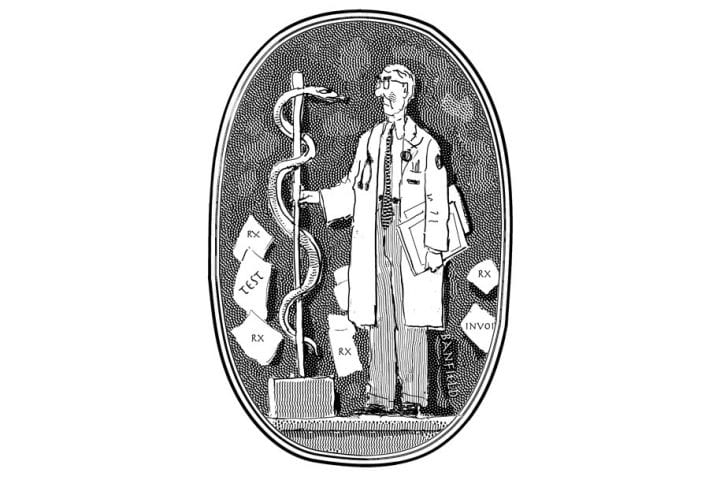Books Reviewed
Here are two sharply different perspectives on the nomination and confirmation of Judge Brett Kavanaugh to the United States Supreme Court in 2018. Kavanaugh’s confirmation hearing was an epic battle. On one side, legal originalists sought to appoint a judge who they believed would interpret cases as the authors of the Constitution intended. On the other, liberals did everything they could to thwart that appointment. Despite their professed reasons, in the last analysis they opposed Kavanaugh because they believe the country has changed so much since 1788 that the Constitution should be reinterpreted to facilitate modern social justice and civil rights projects.
In Justice on Trial: The Kavanaugh Confirmation and the Future of the Supreme Court, Mollie Hemingway and Carrie Severino look back on the Kavanaugh hearings from the standpoint of legally learned moderate conservatives. (Hemingway is a senior editor of the Federalist, while Severino serves as chief counsel for the Judicial Crisis Network, which promotes constitutional rectitude at all levels of government.) They vividly describe how the ostensibly civilized process of confirmation to the country’s highest court degenerated into an appalling and lurid circus, largely determined by a no-holds-barred struggle for public opinion. In The Education of Brett Kavanaugh: An Investigation, Robin Pogrebin and Kate Kelly—both reporters for the New York Times—portray the hearings as a referendum on the #MeToo moment and its denunciations of prominent men for sexual liberties allegedly taken with vulnerable women. On this reading the Senate, by eventually vindicating Kavanaugh, dismissed the contemporary demands of aggrieved womanhood.
For Hemingway and Severino, the Kavanaugh confirmation process was a disgrace and an outrage. A man of incontestably good character and impeccable behavior throughout his adult life was implausibly accused of improper sexual advances 34 and 36 years prior to his nomination. The most prominent accusations came from two women who were well-educated and eloquent but uncorroborated in their testimony. The allegations, which included drunkenness and a proclivity while drunk to grope young women, were given a degree of media attention that would have been mortifyingly embarrassing to any respectable person and incalculably disconcerting to his family. Hemingway’s and Severino’s essential point is that this debacle should not have occurred, because it tainted the judicial confirmation process with poisonously defamatory partisan politics. They make their case rigorously.
For Pogrebin and Kelly, however, the most salient feature of the Kavanaugh confirmation process was that it dramatized the struggles of all women who have been scarred by sexual assault. It was a missed opportunity to assure that the offenders in such cases be held to account for their misconduct. Given their starting perspective, these authors make a respectable effort to present Kavanaugh’s side: they concede his fine human qualities and exemplary behavior in all respects throughout his adult life. They do not question his qualifications as a judge, legal scholar, and writer of hundreds of lower court judgments. However, as analysts, they are much less thorough and persuasive than Hemingway and Severino.
* * *
Hemingway and Severino describe how furiously the anti-Trump media tried to discredit Kavanaugh. They establish clearly that, when the accusations against him finally surfaced, the great majority of press coverage was devoted to portraying Kavanaugh as a liar, a perhaps-reformed attempted rapist, and a habitual perpetrator of sexual assaults. The only sources of evidence for these insinuations were the distant and somewhat fuzzy recollections of Dr. Christine Blasey Ford and Deborah Ramirez. The other accusers who came snorting out of the undergrowth after decades of silence were too much even for the rather willfully credulous Pogrebin and Kelly. The Ramirez claim (of exhibitionism) was completely unsubstantiated, and Hemingway and Severino dispose of it quite crisply as unworthy of serious consideration.
Since Dr. Blasey Ford testified at the nationally televised hearings, spoke well, and seemed neither whiningly pitiful nor horrifyingly screechy, her claim had to be taken seriously. But it was suspect from the start, because Democratic Senator Dianne Feinstein of California sat on Blasey Ford’s letter of accusation for over six weeks before pulling it out as a last-ditch effort to stop Kavanaugh’s confirmation. Pogrebin and Kelly pay no attention to this fact. Perhaps more importantly, they completely fail to notice the inconsistencies in Blasey Ford’s testimony that were gently exposed by Rachel Mitchell, the special questioner hired by the Republican majority on the Senate Judiciary Committee. In fact, Pogrebin and Kelly never even question Blasey Ford’s credibility, despite the facts that 1) her claim to be terrified of flying was a fraud (she is a frequent flyer); 2) her assertion that she did not know the Senate Committee had offered to interview her in California was not believable, since every news-watching person in the world was aware of it; and 3) none of the four witnesses named by Dr. Blasey Ford corroborated her story or even professed any knowledge of the alleged incident.
Pogrebin and Kelly have undoubtedly done a lot of work interviewing everyone on the Blasey Ford and Ramirez side, extensively citing acquaintances of Kavanaugh’s who recall his occasional heavy drinking in high school and as an undergraduate at Yale. The authors are aware that the case against Kavanaugh only saw the light of day when Senator Feinstein and some militantly anti-Trump activists—having already leaked the story to the media anyway—persuaded Dr. Blasey Ford that she owed it to American women to go public. Pogrebin and Kelly likewise acknowledge that a person cannot be convicted of something on the basis of an inconsistently recollected and completely unconfirmed incident from 36 years in the past. But that does not deter them from trotting out absurdly detailed accounts of drinking episodes, as if drink always leads young men to sexual aggression. This is not probative evidence of anything. It is not even enough to satisfy the civil law’s “balance of probabilities” standard, which requires only that a defendant be more likely guilty than not.
* * *
The Education of Brett Kavanaugh opens with assertions that Kavanaugh’s Roman Catholic elementary and secondary schools were places where there was some violence (as there is in all schools where there are boys). The book’s clinching arguments are just as abstruse. Almost a year after Kavanaugh’s installation on the court, a majority of Americans in some normally leftish polls had a negative opinion of him. Kavanaugh’s own mother asked the public to look for “what rings true, what rings false,” and Pogrebin and Kelly conclude that Blasey Ford’s accusations “rang true,” though they do not suggest that Kavanaugh’s rebuttals rang false. The reader of their thin volume (about 40,000 words) is left wondering what possessed them to be so curious about Kavanaugh’s consumption of beer in youth, since these innumerable distant recollections don’t lead anywhere.
The authors make a considerable issue out of Kavanaugh’s supposedly aggressive temperament. But in fact it is almost miraculous that someone who was subjected to such harassment, vilification, and provocation managed to maintain his civility throughout. The book pointedly fails to mention that some of the leading auxiliaries of the Blasey Ford-Ramirez allegations were notoriously partisan Democrats and feminist activists with a known history of brinkmanship in these sorts of controversies. Nor do Pogrebin and Kelly note that mainstream media outlets—including their employer, the New York Times—were almost uniformly hostile to the Kavanaugh nomination. Instead, they simply seem to regret that a judge who was probably guilty of drunken assault on Christine Blasey Ford was confirmed—though they implicitly concede there was inadequate legal grounds to reject him.
* * *
Hemingway and Severino’s much more explicit lament is that the confirmation process in this case became a vicious and shameful battle having nothing to do with the normal criteria for elevating a judge. They argue that this happened because of the underlying battle between strict and flexible interpretations of the Constitution. They have written a factual and illuminating account of a memorable struggle. Pogrebin and Kelly, by contrast, are good reporters nibbling around the edges of the real issues rather emotionally, dressing up their feminist grumbling in pseudo-legalese (including rather annoying chapter titles in sometimes questionable Latin).
Neither book presses what I consider to be the two most important points raised by the Kavanaugh controversy. The first is that even if he had done what Blasey Ford accused him of, it wasn’t a penetration or even necessarily an attempted rape—though it was, if it occurred, very distasteful misbehavior. But it would have had nothing to do with his fitness to be a Supreme Court Justice 36 exemplary years later. Second, neither book makes the observation that the American justice system is itself a shambles. It costs the United States 10% of its GDP per year to produce masses of civil litigation that would be rejected by courts in other advanced countries as frivolous and vexatious. In the criminal justice system, over 90% of cases return a guilty verdict—95% of those without trial, because the perverse plea bargain system incentivizes confession before the prosecution has even formally made its case. Through conservative and liberal periods, the Justices of the Supreme Court have sat for decades like berobed suet puddings while the 5th, 6th, and 8th Amendment rights to an independent grand jury, due process, just compensation for property seizure, prompt justice, an impartial jury, access to counsel, and reasonable bail, have all been put to the shredder. That is why the United States has between six and 12 times as many incarcerated people per capita as other large prosperous democracies: Australia, Canada, France, Germany, Japan, and the United Kingdom. All the pieties uttered about the rule of law by both sides in the Kavanaugh dispute don’t “ring true” to anyone who has had any experience of how the cancerous American justice system really does work, despite the best efforts of many fine people such as Justice Kavanaugh.








